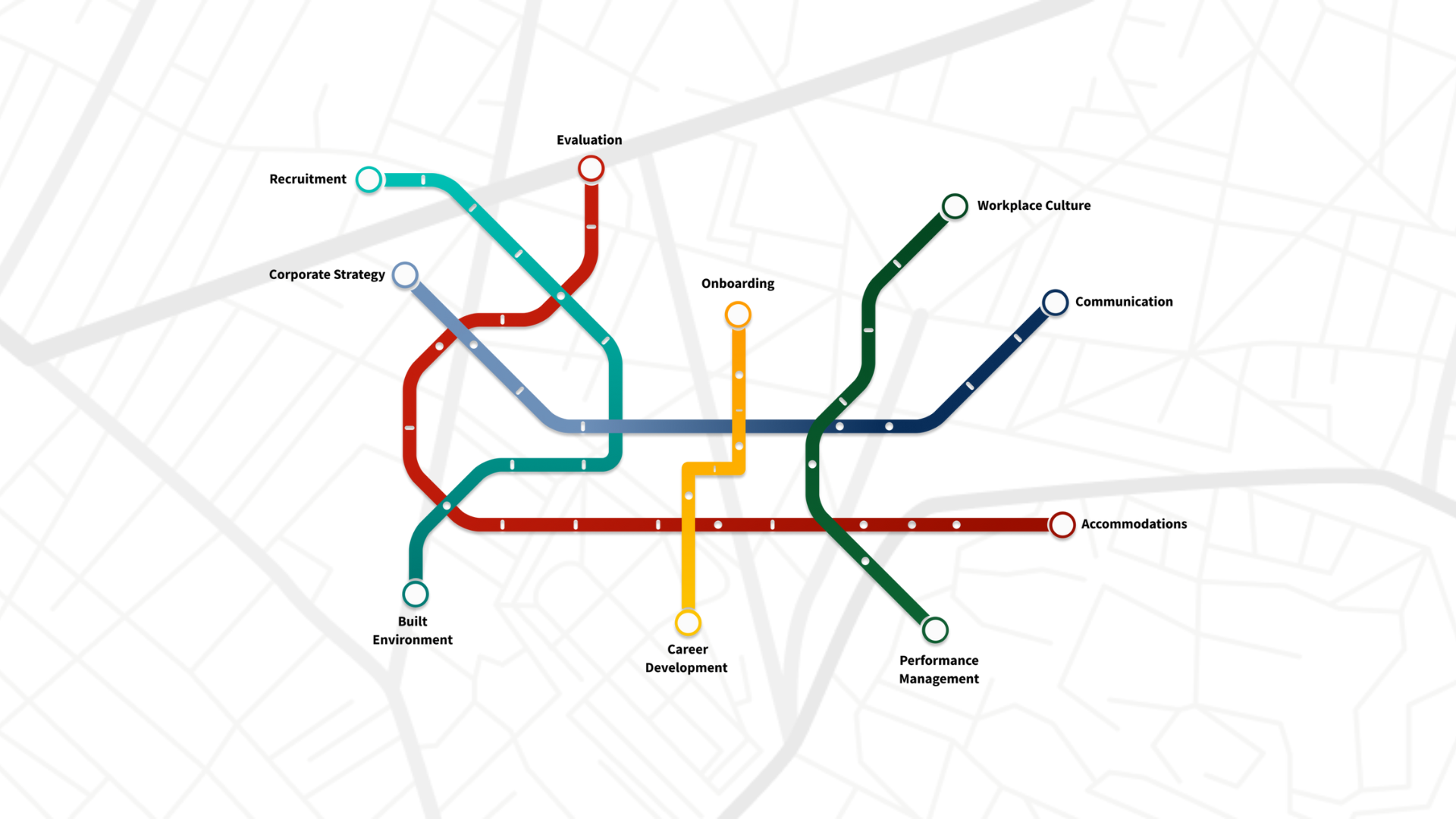June 23, 2025
From Policy to Progress: Canada’s Needed Leap Toward Inclusive Employment

As Canada works to become a more inclusive society, there’s growing attention on the job market—an area where progress has been slow. Recently, Accessibility Standards Canada updated its Employment Standard, and the Government of Canada’s Chief Accessibility Officer released a new annual report focused on employment for people with disabilities. These updates highlight how important it is to address the barriers people with disabilities still face at work and show what’s been done so far—and what still needs to change.
Updates from the Government of Canada
Accessibility Standards Canada recently updated their Employment Standard to include updated language, a section on culture, engagement, and education, and a section on accessibility support systems. Shortly after this, the Chief Accessibility Officer for the Government of Canada released their 2024 Annual Report, highlighting how the employment of people with disabilities across Canada remains a significant area of challenge for employers.
There are over 850,000 Canadians with disabilities who are ready and willing to work, but systemic obstacles continue to block their path. The obstacles outlined in the Chief Accessibility Officer's Annual Report include a lack of awareness, no regulations enforcing some of the measures outlined in ASC’s Employment Standard, unaddressed ableist attitudes and unconscious bias, and insufficient data and funding.
From Awareness to Action: Five Steps for Employers
Federally regulated organizations are being called to lead the way to a more inclusive future. But where should organizations begin? CCRW, a national leader in disability inclusion in the workplace, provides five practical, people-first steps to help employers get started:
1. Know Where You Stand
Start with a gap analysis. Compare your current hiring, onboarding, and workplace practices with the new standard. This helps identify what’s already working—and what needs attention. Think of it as your accessibility roadmap.
2. Appoint Accessibility Champions
Accessibility doesn’t happen by accident. Assign a dedicated leader or team to oversee implementation. This group should coordinate efforts, track progress, and report directly to senior leadership. Accountability is key.
3. Build a Culture of Inclusion
Accessibility is more than ramps and software; it’s about attitudes and awareness. Offer training on accessibility and anti-ableism. CCRW has created Disability Confidence Training to help leaders and employers build their confidence hiring and retaining workers with disabilities. Encourage open conversations. And most importantly, listen to employees with disabilities. Their lived experience is your greatest asset.
4. Update Your Policies
Use the standard’s guidance to refresh or create accessibility policies. These should be clear, inclusive, and intersectional, recognizing that disability can intersect with race, gender, and other identities. Make sure policies are easy to find and even easier to follow. CCRW can support you in doing a policy review to ensure your accommodation policies are compliant.
5. Support Every Step of the Way
From recruitment to retirement, employees should feel supported. CCRW's Disability Confidence Toolkit is a practical resource for employees to find the information they need. Set up systems for requesting accommodations, provide regular check-ins, and ensure managers are trained to respond with empathy and efficiency.
Why Inclusion Should Be a Strategic Priority
Inclusion is no longer a “nice to have”; it’s a strategic imperative. CCRW’s 2024 Shaping Tomorrow Trends Report shows that inclusive workplaces are more resilient, innovative, and competitive.
Consider the evidence:
- 76% of job seekers (with and without disabilities) consider diversity and inclusion when evaluating employers.
- Companies that prioritize disability inclusion see 1.6x more revenue, 2.6x more net income, and are 25% more likely to outperform competitors.
- The average one-time cost of accommodations is just $375, with 35.6% costing under $100 and only 6.8% exceeding $1,000.
- Over 60% of employers still lack internal policies to support advancement for employees with disabilities.
- More than 30% of people with disabilities report being disadvantaged in their careers due to disability-related barriers.
Inclusion isn’t just about compliance, it’s about unlocking potential, attracting top talent, and building workplaces where everyone can thrive.
A Future Where Everyone Thrives
The Chief Accessibility Officer reminds us that “accessibility is everyone’s business.” As CCRW continues to build disability confidence across Canada, employers who are already leading the way are now invited to showcase their commitment through CCRW’s Disability Confident Employer digital badge. This recognition signals not just compliance, but leadership. By embracing CCRW’s forward-looking recommendations—such as accessible upskilling programs, inclusive leadership pathways, and robust equity tracking—Canadian organizations can set the standard for inclusive employment and help shape a future where everyone can thrive.
Resources

From Policy to Progress Infographic
Inclusion is no longer a “nice to have”; it’s a strategic imperative. CCRW’s 2024 Shaping Tomorrow Trends Report shows that inclusive workplaces are more resilient, innovative, and competitive.

Shaping Tomorrow | CCRW Trends Report 2024
Annually CCRW releases a report of trends on disability and work from across Canada.

Disability Confidence Training
To help companies and leaders demonstrate the knowledge gained from our toolkit, we have developed the Disability Confidence eLearning course. This course covers each section of the toolkit through interactive exercises that utilize information from the downloadable resources provided.
Subscribe
Sign up to receive updates from CCRW.